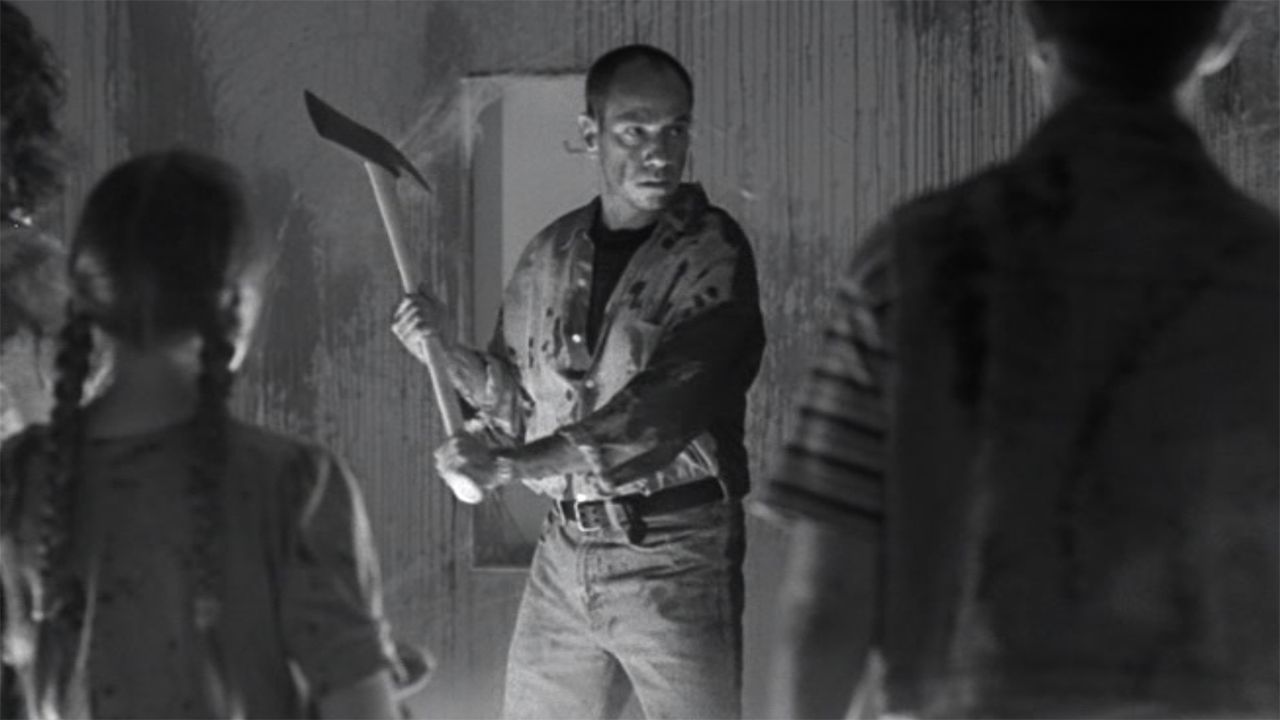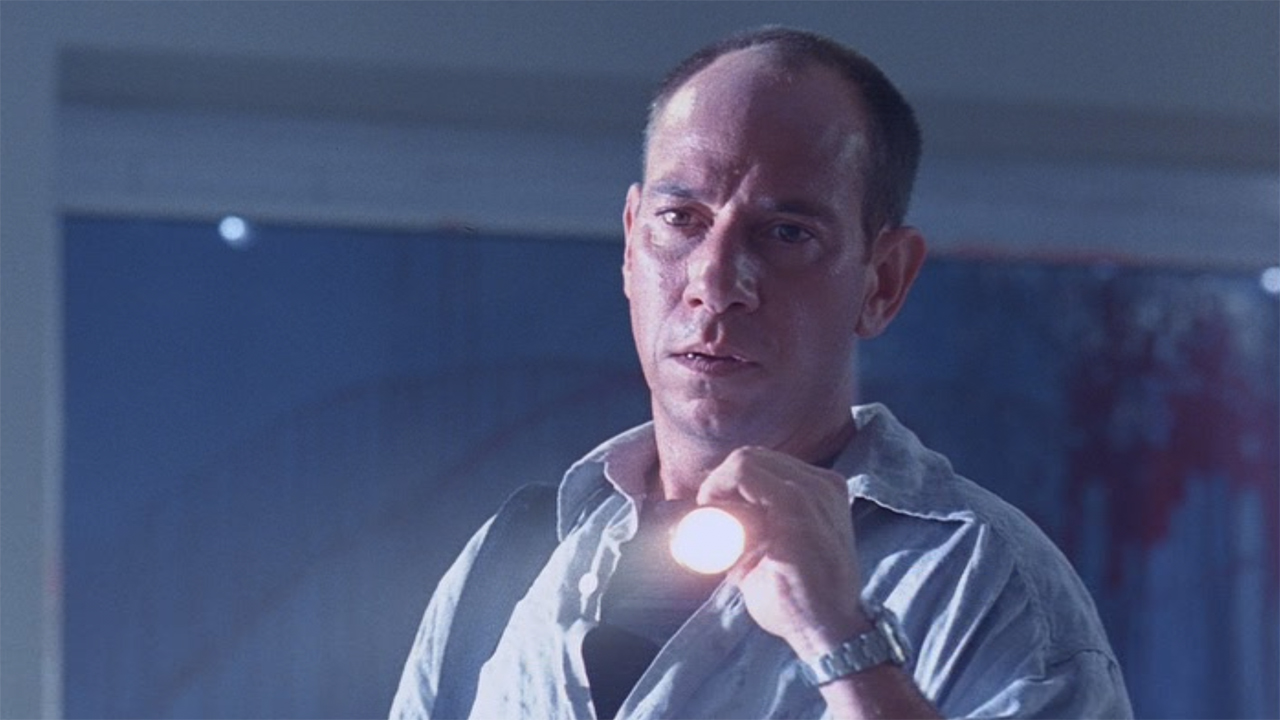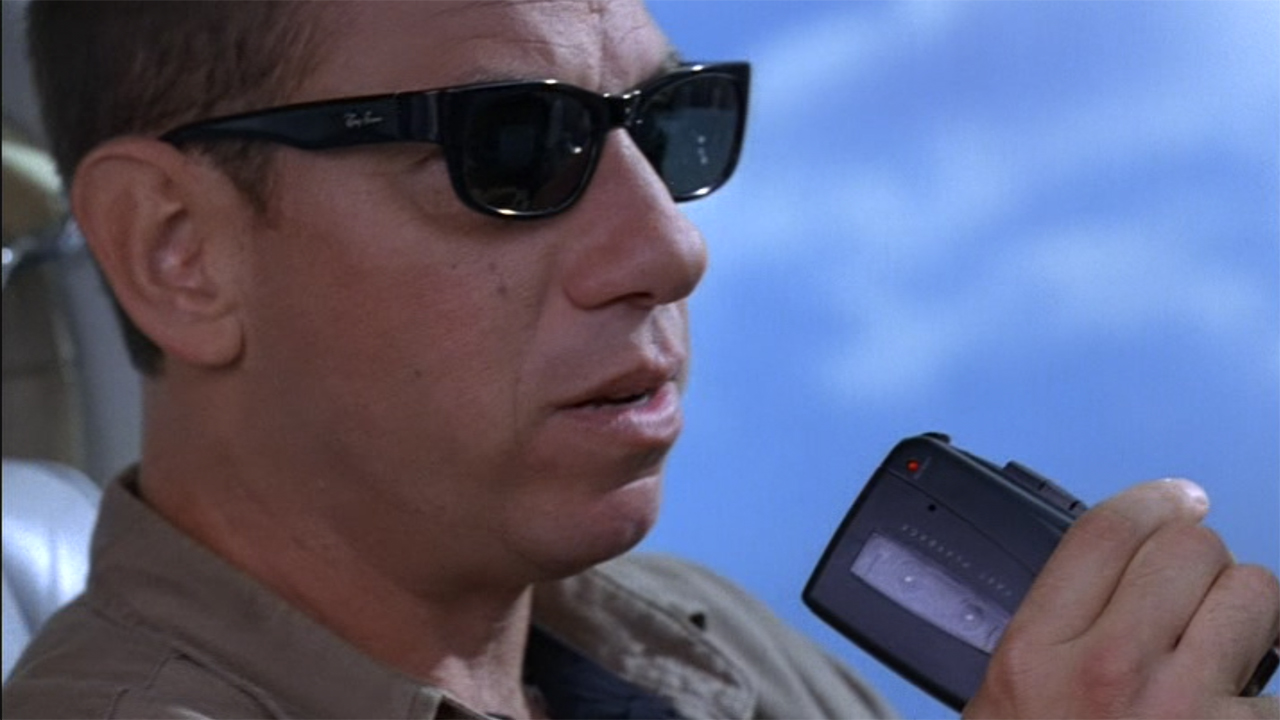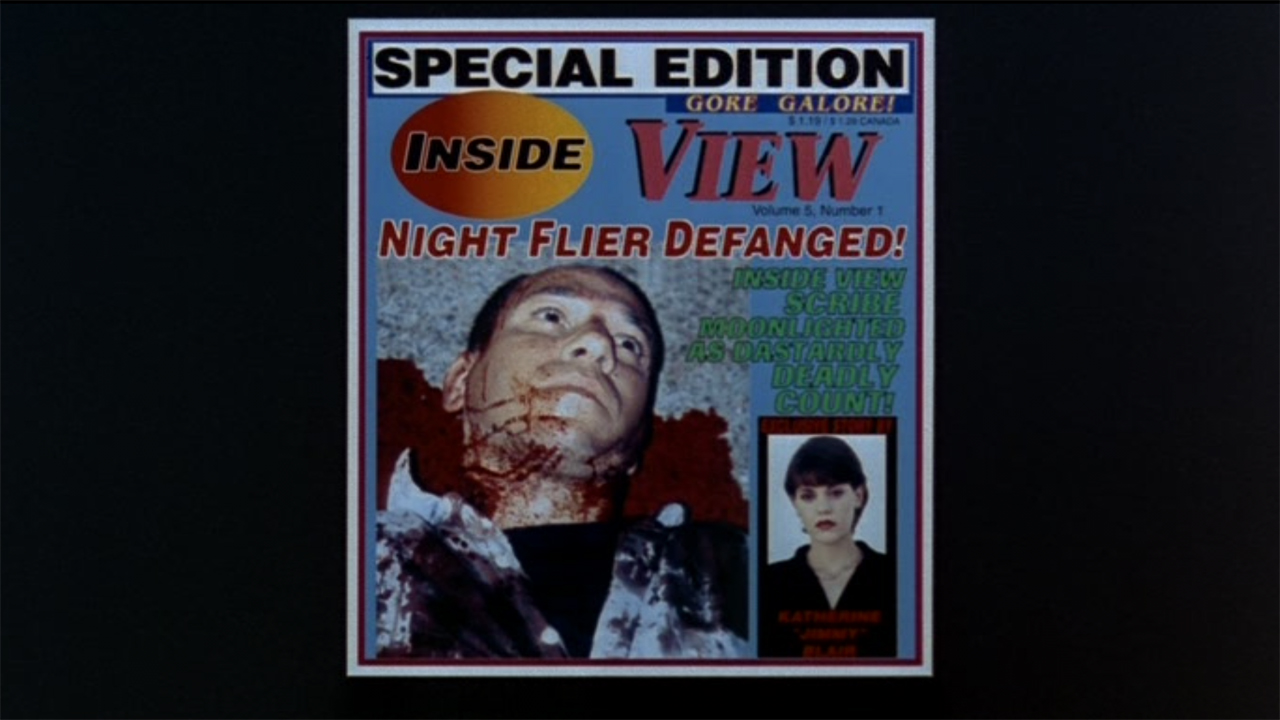Adapting Stephen King's The Night Flier: The 1997 TV Movie Is Mean, Cynical, And Underappreciated
More mile-high terror from Stephen King

Mark Pavia’s The Night Flier isn’t a movie that is considered particularly prestigious, but in a strange way its origins share similarities to what is arguably the most prestigious Stephen King adaptation ever: Frank Darabont’s The Shawshank Redemption. The two features don’t have much in common in terms of themes, characters, or tone, but they are both projects that were made because of a significant level of ambition and hustle.
Initially meant to be made as a theatrically released film, The Night Flier began development via Richard P. Rubinstein and Mitchell Galin, two of the co-founders of Laurel Entertainment and producers of Creepshow, Pet Sematary, The Stand, and The Langoliers among other Stephen King adaptations. Laurel Entertainment was dissolved in the mid-1990s following a merger, but Rubinstein and Galin were quick to get back into the business. According to Creepshows by Stephen Jones, the duo formed a new production company, New Amsterdam Entertainment, Inc., and The Night Flier was their first feature to go into principal photography – the movie garnering buzz internally because of the involvement of an exciting young filmmaker.
The Night Flier got made because of a calling card short titled Drag that aspiring director Mark Pavia, after graduating from film school, sent all around Hollywood – including to both Stephen King and Richard Rubinstein. The two men were in the midst of making The Stand miniseries when they first watched the heavily Night Of The Living Dead-inspired work, but they saw enough potential in Pavia to schedule a meeting with him. Similar to how King sensed something special in Frank Darabont’s dollar baby short The Woman In The Room prior to the making of The Shawshank Redemption, the author developed enough faith in Pavia to support him making The Night Flier as his debut feature.
Made without a distributor in place, the movie ultimately had to settle for a premiere on HBO and a later limited run in theaters from New Line Cinema… though it only made a grand total of $125,397 on the big screen. This history, along with a number of reviews lacking appreciation for the film’s darkness and irrepressible cynicism, has rendered The Night Flier one of the more overlooked titles in the legacy of Stephen King adaptations – but that’s an ill-fitting reputation, as it is a title worthy of your attention.

What “The Night Flier” Is About
There’s an obvious logic to why Stephen King is drawn to writer protagonists: it’s a mentality and perspective with which he can always personally identify. It’s a famous trademark of the author’s work that makes the origins of “The Night Flier” a bit funny. Its lead character – a tabloid reporter named Richard Dees – was initially created as a simple one-off supporting player, but King’s inability to just forget about the sleazy journalist and his scoop-hungry brashness resulted in the creation of a short story where he is the lead.
Richard Dees’ first appearance in the Stephen King canon can be found in The Dead Zone – though it’s a part so minor that it wasn’t deemed necessary to include in David Cronenberg’s big screen adaptation (something I noted in my column back in June). Appearing in Chapter 14 and only Chapter 14, he approaches Johnny Smith as a representative from Inside View magazine, showing up at the psychic’s house unannounced and uninvited. He’s an unabashed cynic who tries to sell Johnny on being his outlet’s in-house clairvoyant – outwardly declaring that he doesn’t care if the whole tactical soothsaying bit is a fraud; he just wants regular circulation boosts and maybe an exploitative book.
It’s an interaction that doesn’t end particularly well, summed up with Johnny’s goodbye to the reporter being, “I guess I’ll go get my Remmy and shoot myself a trespasser.”
Your Daily Blend of Entertainment News
Johnny Smith cannot be counted on the list of Richard Dees fans, but Stephen King certainly is one, and in the “Notes” section of Nightmares & Dreamscapes (the collection in which the story is republished) he explains as much. The author identifies Dees as a character who “catches a writer's attention and refuses to go away,” and that turned out to boost a thin story he initially developed as a “lark” – one featuring a vampire with a pilot’s license. In King’s words,
I rarely understand my characters, any more than I understand the lives and hearts of the real people I meet every day, but I find that it's sometimes possible to plot them, as a cartographer plots his or her maps. As I worked on ‘The Night Flier,’ I began to glimpse a man of profound alienation, a man who seemed to somehow sum up some of the most terrible and confusing things about our supposedly open society in the last quarter of the century.
As a veteran tabloid reporter, Richard Dees has an iron-clad rule to “never believe what you publish, and never publish what you believe,” and it leads him to have a lucrative career that allows him to emotionlessly trudge through the worst aspects of humanity while inventing outlandish details for print and snapping the most gruesome photographs possible. A story with blood and guts plus a good dime store mystery is described as “the Holy Grail” in his mind – and thus his ears perk when he learns about a potential serial killer on the loose who seems to behave like a vampire.
Dees, having a pilot’s license himself, is able to trace the path of the plane belonging to the individual he refers to as “The Night Flier,” and he learns that the killer lands and registers at small airports under the name Dwight Renfield – a reference to 1931’s Dracula, starring Dwight Frye as the titular vampire’s famous bug-eating toady. The dark and mysterious Skymaster 337 with red piping flies down the East coast from Maine to North Carolina, and the unabashed yellow journalist tracks him each step of the way, learning the gory details about all of the bodies left in the monster’s wake.
A stormy, hazardous landing at Wilmington International Airport nearly sees Richard Dees killed, but surviving allows him the confrontation with Dwight Renfield that he craves – though it has the protagonist comes face-to-face with realities he has spent his life denying.

How Mark Pavia’s The Night Flier Differs From Stephen King’s Short Story
Reading Stephen King’s “The Night Flier” and then watching Mark Pavia’s adaptation, you’ll notice that a good 98 percent of everything that the author put on the page is included in the live-action counterpart – though it is noteworthy that the non-linear narrative is flattened out, save for a couple of flashbacks. The overwhelming majority of alterations that the movie makes to the source material come in the form of additions, expanding the narrative for a feature-length runtime. This includes the addition of an original and important supporting character as well as a number of “extra” scenes.
Said new character is Katherine “Jimmy” Blair (Julie Entwisle), her nickname being a reference to Superman’s pal Jimmy Olsen – and given to her by Richard Dees (Miguel Ferrer) himself. She is a new addition to the Inside View staff, and she is ambitious but naïve. She sees Dees as a potential mentor at the start, but that idea goes out the window quickly as she gets to know him and register his outrageous selfishness and ego.
Her presence in the film adaptation of The Night Flier also serves to enhance the role of Merton Morrison (Dan Monahan), the editor of Inside View. In King’s version he is featured exclusively at the start when he messes with Dees as the reporter demands the serial killer story – the reporter having turned it down when it was first offered – but with the introduction of Katherine Morrison is made to be more sinister. Specifically, he ends up pitting Katherine against Dees by encouraging her to conduct a parallel investigation into Dwight Renfield (Michael H. Moss).
There are a couple of sequences added to the movie that solely feel like padding – such as Richard Dees desecrating the gravesite of Dwight’s first victim for a good photograph, and coming across a particularly gruesome car accident – but the more substantial original stuff is a collection of scenes that have the titular vampire warn Dees to back off, including the message “Stay Away” written in blood on the window of his motel room.
The Night Flier adaptation also ends in a much, much darker place than Stephen King’s original conclusion. In the short story, Richard Dees’ investigation is metaphorically killed following his discovery of the extreme level of carnage in the Wilmington International Airport and his confrontation with Dwight in the bathroom – a confrontation that sees the vampire destroy the film in Dees’ camera. Once Dwight is gone, the reporter runs into a horrified cop, but he is left unharmed when he announces himself as press. He’s left alive, but wrestling with everything he’s seen and how it has wholly upended his world view.
Alternatively, the film sees protagonist experience the same bathroom confrontation, but he chooses to charge out of the commode and demand to see Dwight’s face. This turns out to be a mistake, as not only is the Night Flier a real, hideous monster – scaring Dees witless – but he forces the reporter to drink blood from his wrist. Dees then finds himself in a foggy, black-and-white world that sees the vampire’s slaughtered victims around the airport become bloodthirsty monsters themselves. Grabbing a fire axe from an emergency case on the wall, the Inside View scoop hound begins to chop up everything he sees.
When Katherine arrives at the airport with two police officers, they believe that Dees is the one who has killed everybody, and they shoot him dead as he charges at the cub reporter with the axe still in hand. The police looking for clarification on what’s going on, “Jimmy” tells them that Richard Dees is the serial killer known as The Night Flier, and she publishes the expose as her first cover story for Inside View.

Is It Worthy Of The King?
Mark Pavia’s The Night Flyer is a “mean” movie – and I respect that there are some audiences that don’t respond to that. If Richard Dees were a real person, surely most of us would rather hit him with a shovel than grab a drink with him, so I get why there are people who wouldn’t want to spend 90 minutes watching a movie featuring him as the main character reveling in the grim darkness of the world.
Me? I’m a guy who gets a kick out of mean movies, and I’m most definitely tuned into the channel on which The Night Flier is broadcast.
Miguel Ferrer – who has notable Stephen King history having played Lloyd Henreid in the 1994 miniseries adaptation of The Stand and an uncredited role in the remake of The Shining – demonstrates an acute understanding of the assignment playing Richard Dees, and he properly doesn’t hold back in his performance. There’s not a likable follicle on his person, but his bloodthirsty ambition is engrossing, and it properly engages you with the investigation even if you’re not particularly fond of the investigator.
A significant amount of the content in The Night Flier not taken directly from Stephen King’s short story feels like padding, but Katherine Blair is a great addition by Mark Pavia and co-writer Jack O'Donnell, as she not only serves to enhance the sociopathic personality of Richard Dees, but also outfits the narrative with an ending that’s superior to the source material. It’s an impressively firm commitment to the movie’s cynical edge that is more memorable than King’s.
Budgetary restraints on the project do make themselves apparent, as there isn’t much production value to speak of until the climax, and the monster makeup isn’t terribly impressive, but The Night Flier still qualifies as one of the more underappreciated titles in the canon of Stephen King adaptations.

How To Watch Mark Pavia’s The Night Flier
If you’re now excited to check out The Night Flier for yourself, the bad news is that you’ll have to do a bit of hunting for it. The film is not currently streaming officially on any platforms, nor does it seem to be available to rent or purchase digitally in general. Your best bet is getting a copy of the DVD, which doesn’t feature the best quality, but you can find a used copy for a reasonable price after a quick search.
Between The Shining miniseries, Quicksilver Highway, the “Revelations of ‘Becka Paulson” episode of The Outer Limits, Trucks, and The Night Flier, 1997 was a year all about TV in the realm of Stephen King adaptations, but that we’re heading back to the big screen world next week as we move into 1998. Look for my column on Bryan Singer’s Apt Pupil in the CinemaBlend movie section on Wednesday, and for now you can click through the banners below to discover previous installments of Adapting Stephen King.







Eric Eisenberg is the Assistant Managing Editor at CinemaBlend. After graduating Boston University and earning a bachelor’s degree in journalism, he took a part-time job as a staff writer for CinemaBlend, and after six months was offered the opportunity to move to Los Angeles and take on a newly created West Coast Editor position. Over a decade later, he's continuing to advance his interests and expertise. In addition to conducting filmmaker interviews and contributing to the news and feature content of the site, Eric also oversees the Movie Reviews section, writes the the weekend box office report (published Sundays), and is the site's resident Stephen King expert. He has two King-related columns.
